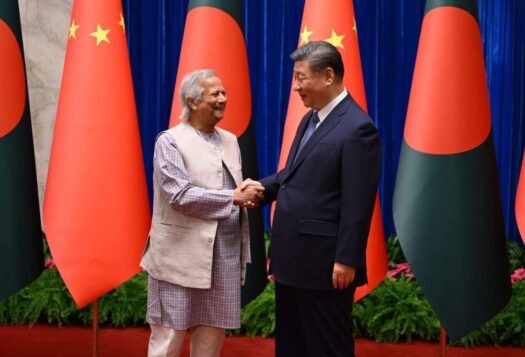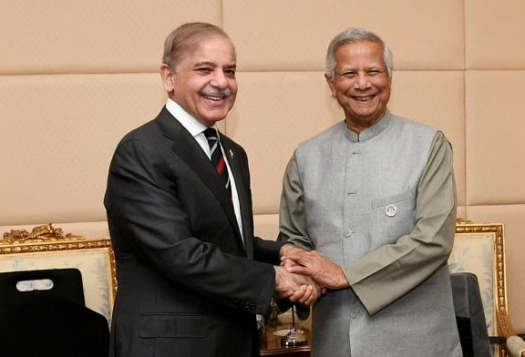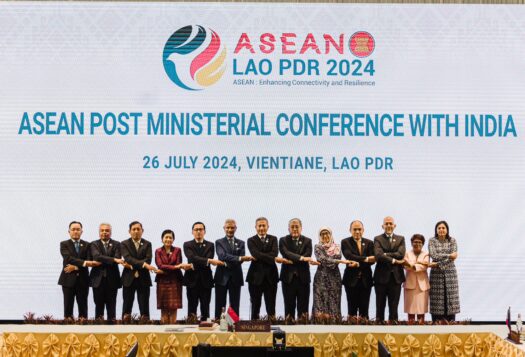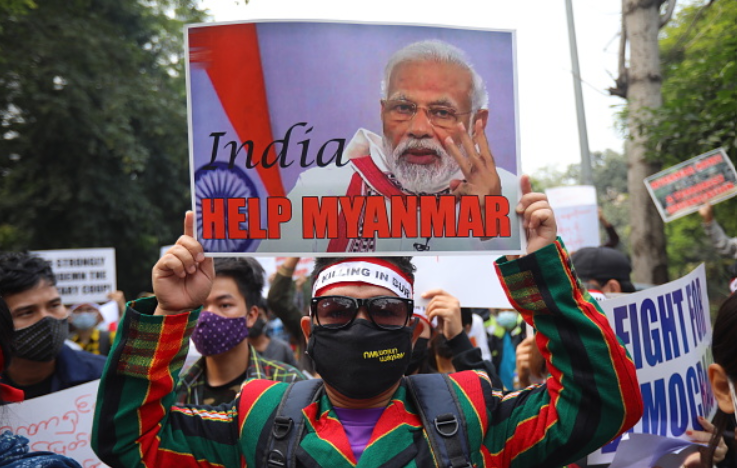
The military junta government in Myanmar declared an extension of emergency for another six months on February 1st. This move indicates a delay in the proposed August elections, which many analysts believed would not have been free and fair. India’s policy posture toward Myanmar is crucial for the regional balance of power and will largely be defined by the security environment in India’s northeastern border regions and the junta regime’s evolving foreign relations with countries such as China. In the coming months, India’s proactive role in the crisis will aim at building relationships with local stakeholders alongside the junta government. For this approach to prove fruitful, engaging Ethnic Armed Organizations (EAOs) will take center stage.
Domestic Situation
The military junta has a clear edge over the opposition forces in strike capabilities. On its 75th anniversary in December 2022, the Myanmar Air Force (MAF) showcased the first of the six newly commissioned Sukhoi SU-30 jets acquired from Russia in 2018. Five Chinese FTC-2000Gs were also presented apart from other aircraft that displayed the MAF’s airstrike capabilities. The possibility of opposition forces getting their hands on man-portable air defense systems or MANPADS seems bleak as none of the neighboring countries have shown any interest in facilitating such a transfer. The lack of a supplier for such arms to opposition forces is a different matter altogether, placing them at a considerable disadvantage from a combat perspective. Hence the junta still retains primary control, making its government a key interface for any diplomatic or business relationship with Myanmar.
India’s policy posture towards Myanmar is crucial for the regional balance of power and will be largely defined by the security environment in India’s northeastern border regions and the junta regime’s evolving foreign relations with countries such as China.
As a large but scattered resistance is sustained across the country, the junta can maneuver the EAOs by offering autonomy to some and compelling others for a ceasefire to prevent a consolidated People’s Defense Force (PDF) led military opposition from emerging. The variable PDF segments, including guerilla groups, are also not entirely under the command and agreement of the National Unity Government (NUG) leadership. Some EAOs support the NUG but their cooperation with the PDFs is lacking in many areas. A fractured consensus and lack of any cohesive opposition strategy for replacing the junta can be a strong determinant for any country’s foreign policy approach towards Myanmar.
India in the Mix
For India, engagement with the junta government keeps border insurgencies in check, but ongoing conflict in the adjoining Chin state in Myanmar can push a large number of refugees into its territory. It can also boost anti-India insurgent groups allied with China, operating from loosely monitored borderlands. The junta forces targeted the Chin National Front (CNF) headquarters at Camp Victoria alongside the India-Myanmar border in January, forcing refugees to flee to the Indian side. A police station in Thantlang township was seized by Chin resistance forces on February 8, and the junta forces bombed the area in response. These incidents underscore an intense ongoing conflict in the region, which has the potential to spill over across the border into India’s northeastern states. Political upheaval or greater conflict in these states, which are connected to the mainland via the narrow Siliguri corridor, can be a nightmare that New Delhi would want to avoid at any cost.
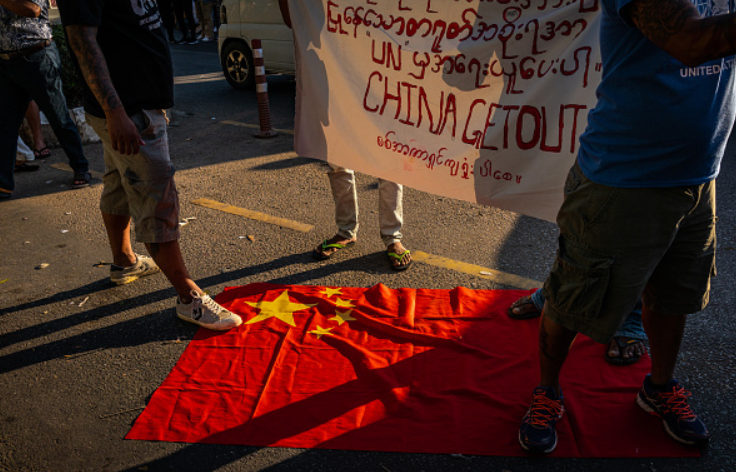
China’s growing influence in Myanmar is a deep strategic concern in New Delhi, likely shared by fellow Quad partners, albeit not to the same degree. Reportedly, the junta government had recently held talks with three major EAOs in the Shan state, including the United Wa State Army (UWSA), to build a conducive environment for the conduct of elections. UWSA, which is the world’s largest non-state military with close links to China, and other EAOs also held talks with a Chinese envoy in December 2022 in Naypyidaw. While Beijing’s strategy is not explicit, its influence among the EAOs in Myanmar and with the military junta cannot be ignored. China’s involvement with the junta-backed Union Solidarity and Development Party has also raised some eyebrows in India, notwithstanding the complicated relationship between leadership in China and Myanmar over the Kokang region along their shared border.
In July 2022, Chinese Foreign Minister Wang Yi met with his counterpart in Myanmar and discussed railway connectivity projects under the China-Myanmar Economic Corridor. The preliminary work on these infrastructure projects has seemingly started. One of the most critical concerns is China’s access to the Bay of Bengal through port development projects in the Rakhine state. India’s large-scale infrastructure connectivity projects in the region, such as the Kaladan Multimodal Transit Transport project, make it essential to maintain a working relationship with the government in Naypyidaw. The junta leader’s recent visit to the project site indicates positive development of ties between India and Myanmar.
Policy Options
Given the insufficient capabilities of the opposition in Myanmar, more clashes can be expected in the coming months but without any substantial change in the country’s political status quo. India’s approach will be in the interest of preserving its national security, especially as the global security order becomes more vulnerable. It is also a function of the military junta’s foreign relations with countries other than China, essentially reflecting on the recognition and tacit support it receives from segments of the international community.
Junta leader Min Aung Hlaing was received in Russia twice since he came to power, highlighting an upgrade in bilateral relations. Despite ASEAN’s official stance of not inviting political representation from Myanmar, Thailand hosted an informal foreign ministers’ meeting in December 2022, attended by Cambodia, Laos, Myanmar, and Vietnam. Bangkok has reportedly maintained normal ties with the junta government in the past year. Even as the ASEAN resolution advocates all cessation of violence, member nations remain divided about its implementation and further steps on the crisis. This allows the junta regime to continue diplomatic and informal engagements with a number of these countries. Singapore remains the largest foreign investor in Myanmar, and Japan has considerable investment too, naturally upscaling their stakes and necessitating a continuing business relationship with the junta government.
As China seeks to strengthen its influence among the EAOs, it is also prudent that like-minded partners, such as the United States and India, are synchronized in their approach to developing a fruitful relationship with local security stakeholders.
Although the United States and its allies sanction the junta regime, India would not risk a strain in relations with Naypyidaw given its significant interests. As close security partners, however, New Delhi may expect Washington to acknowledge the nuance in its Myanmar policy. As China seeks to strengthen its influence among the EAOs, it is also prudent that like-minded partners, such as the United States and India, are synchronized in their approach to developing a fruitful relationship with local security stakeholders.
New Delhi can leverage its relationship with the junta to lead negotiations for a ceasefire with the CNF. The continuous violence has led to substantial loss on both sides in the region, including forced displacement. There is a need for stabilizing security and introducing peace-sustaining measures, such as a ceasefire, to address urgent humanitarian requirements. This capacity-building and peace process may have the potential for outreach to a much larger community in Myanmar, which can help facilitate the resolution of longstanding distrust among major conflicting parties. The Myanmar crisis is currently one of the world’s fast-deteriorating situations where complete dissociation and negligence can prove to incur geopolitical pitfalls in the near future.
Also Read: UNSC Resolution 2669 and the Future of the Myanmar Crisis
***
Image 1: Arrush Chopra/NurPhoto via Getty Images
Image 2: Hkun Lat/Getty Images
